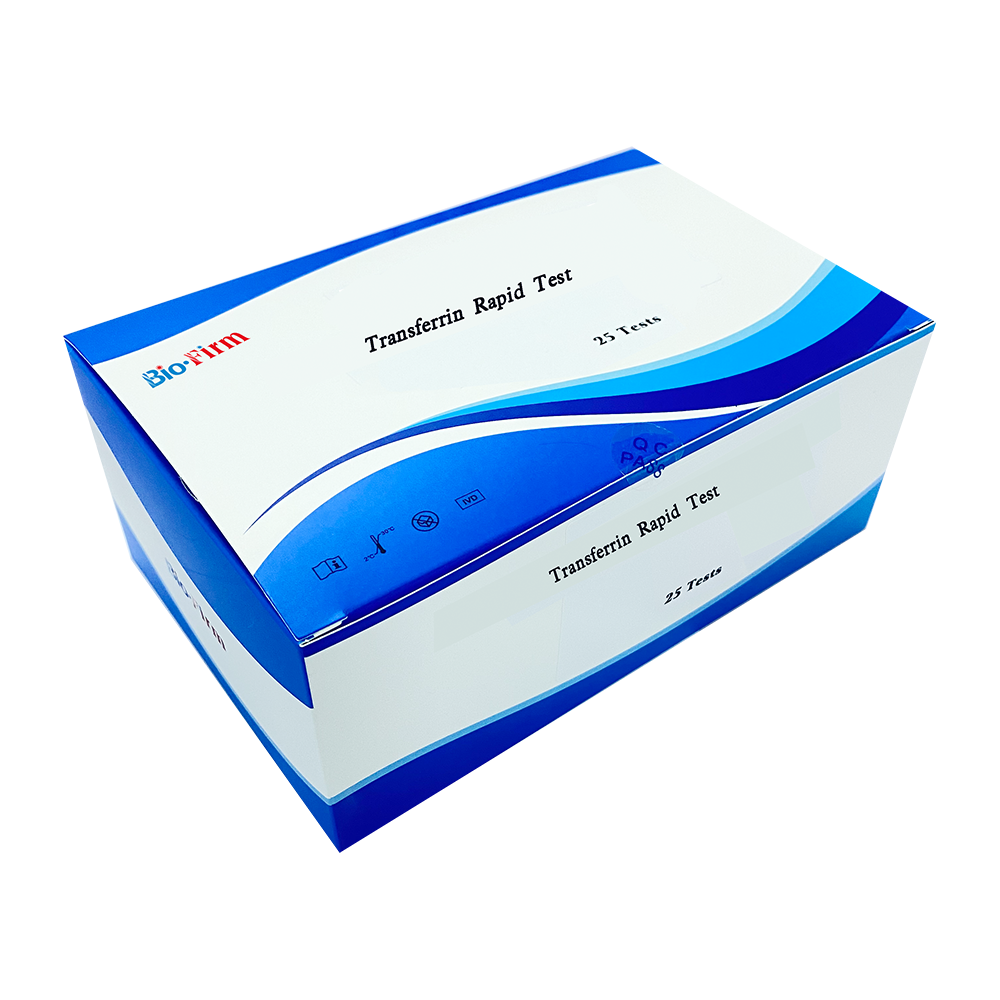Jul 01,2022
The underlying principle of the transferrin antigen rapid test is based on immunochromatography, which is a method combining immunoassay techniques with chromatographic separation. This principle allows for the rapid and specific detection of transferrin, a protein found in blood and other body fluids. Here’s a detailed explanation of the principle:
Immunochromatography Principle
Sample Application:
A small amount of the sample (e.g., blood, serum, or other bodily fluids) is applied to the sample pad of the test device.
Migration:
The sample migrates along the test strip by capillary action. As it moves, it encounters various components of the test strip.
Antigen-Antibody Reaction:
The test strip contains immobilized antibodies specific to transferrin. These antibodies are usually conjugated with a detectable label, such as colored particles (e.g., gold nanoparticles) or fluorescent dyes.
When the sample containing transferrin migrates over the conjugate pad, the transferrin binds to these labeled antibodies, forming antigen-antibody complexes.
Capture and Detection:
The antigen-antibody complexes continue to migrate along the strip until they reach the test line (T-line), which has another set of immobilized antibodies specific to transferrin.
These immobilized antibodies capture the antigen-antibody complexes, causing the labeled particles to accumulate at the T-line, resulting in a visible line or signal.
Control Line:
The test strip also contains a control line (C-line) with antibodies that capture the labeled antibodies not bound to transferrin. The appearance of the control line indicates that the test has worked correctly, and the sample has migrated properly along the strip.
Result Interpretation:
The presence of a visible line at the test line (T-line) indicates a positive result, meaning transferrin is present in the sample.
The control line (C-line) should always appear to validate the test results. If the control line does not appear, the test is invalid and should be repeated.

Key Components
Sample Pad: Absorbs the sample and allows it to migrate onto the test strip.
Conjugate Pad: Contains labeled antibodies that bind to transferrin.
Nitrocellulose Membrane: Houses the test line and control line with immobilized antibodies.
Absorbent Pad: Wicks away excess sample and facilitates continuous capillary flow.
Applications
The transferrin antigen rapid test is primarily used in clinical settings for the detection of transferrin as a marker for various conditions, such as:
Gastrointestinal Bleeding: Detecting transferrin in fecal samples can help diagnose gastrointestinal bleeding.
Iron Deficiency Anemia: Measuring transferrin levels can assist in diagnosing and managing iron deficiency anemia.
Protein-Losing Enteropathies: Assessing transferrin levels can help identify protein loss through the gastrointestinal tract.
Advantages
Speed: Provides results within minutes.
Simplicity: Easy to use and interpret without the need for specialized equipment.
Portability: Suitable for point-of-care testing and field use.
Cost-Effective: Lower cost compared to laboratory-based assays.
By leveraging the principle of immunochromatography, the transferrin antigen rapid test offers a quick and reliable method for detecting transferrin in various biological samples, aiding in the rapid diagnosis and management of related health conditions.



 Español
Español
 Français
Français
 Deutsch
Deutsch
 عربى
عربى








